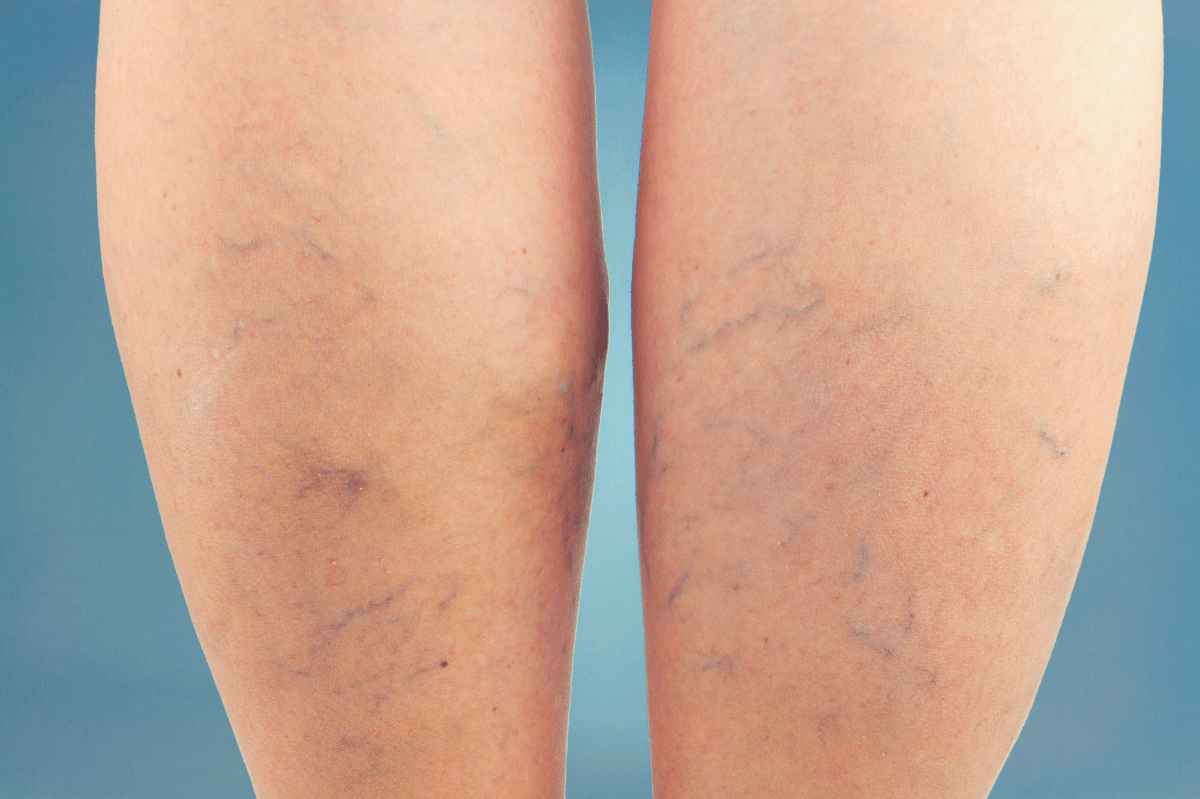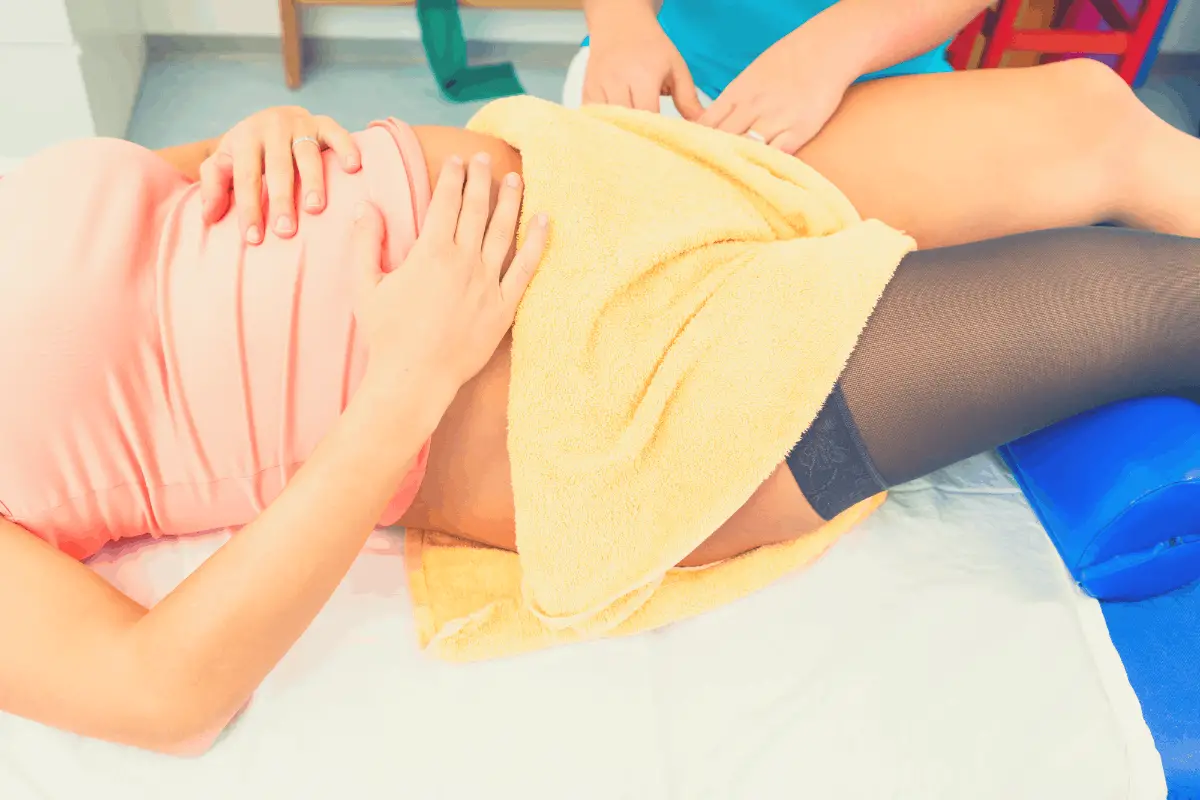Persistently swollen feet is one of the common physical conditions associated with pregnancy. The situation can get so bad that walking and engaging in normal daily activities may become difficult for the expectant mother.
This is why compression socks have become such a valuable tool in the arsenal of pregnant women. These are specialized socks that can be worn around the leg to compress the limb and supercharge blood flow.
Also known as compression stockings, they can inhibit the formation of blood clots while lowering venous pressure and impairments to the venous walls. This can lead to a tremendous reduction in varicose veins and swelling – 2 of the most common side effects of pregnancy.
What are the Benefits of Wearing Compression Socks During Pregnancy?
Wearing compression socks during pregnancy is not only OK, but it can also be beneficial to the expectant woman’s overall health and comfort. Shall we take a look at a few reasons why you should wear a pair of these stockings?
1. Minimal Swelling
Medically known as Edema, swelling is a common occurrence in pregnant women as the body ramps up fluid production to meet the needs of the growing fetus. Unfortunately, swelling in any part of the body, especially the legs and feet may lead to serious degrees of pain and discomfort.
Since compression is a proven swelling reduction method, wearing these socks can have a positive effect on the legs and feet. The gentle squeezing from the socks may lead to a reduction in swelling levels and a resultant lowering of the discomfort in the affected areas.
2. Reduces Varicose Veins

Varicose veins can be a sore sight to look at. Unfortunately, these blue or dark purple veins that appear on the legs may be common during pregnancy. The condition pops up when the increased levels of the progesterone hormone force the walls of the veins to relax, leading to a pooling of blood in the lower body due to gravity.
Wearing compression stockings may eliminate or at least reduce the incidence of varicose veins in pregnant women. Even in those already suffering from the condition, wearing these stockings during the day can mask the affected areas from the prying eyes of others.
3. Improves Blood Circulation
The effects of pregnancy such as the increased production of hormones, blood, and other fluids can lead to blood clotting issues. With the uterus expanding due to the ever-growing fetus, the pressure on the pelvic veins may be extremely high.
The good news is that compression stockings can offer gentle massaging of the muscles, resulting in the blood flowing upwards towards the other body parts. This means an improvement in blood circulation which may have positive knock-on effects that can prevent serious conditions such as Deep Vein Thrombosis.
How do you Choose The Best Compression Socks For Pregnancy?
Compression socks can provide positive effects for pregnant women but only when the right model is selected. Here are the best factors for choosing maternity compression socks.
Fit: Like other types of apparel, compression socks come in different sizes. Choosing a tight and comfortable fit can ensure maximum compression of the legs and feet throughout wearing. Avoid extremely tight socks as they may exacerbate the pain in the legs and feet.
Compression Level: As previously discussed, the best maternity compression socks range between 15-20 mmHg and 20-30 mmHg depending on the level of the expectant mother’s swelling. These socks are available over the counter but speaking to your gynecologist or obstetrician for guidance can be a step in the right direction.
Style: Compression socks come in different styles meaning multiple options for pregnant women to choose from. The most popular style comes in the form of regular socks worn with shoes. Pantyhose compression stocking and knee-high compression socks are the other options available in the market. As a first-time expectant mother, trying varying styles may help you choose what works best in terms of comfort and performance.
Ease of Use: The technique for wearing compression socks can be slightly different compared to other types of socks. They typically require being rolled onto the legs like a pantyhose but slowly and distinctly. A quick visit to YouTube may reveal some of the best techniques for wearing compression socks, particularly during pregnancy. Choosing an easy-to-use model can ensure little discomfort during the wearing process particularly in the final weeks of the pregnancy. Besides, reading independent reviews from verified buyers on Amazon may be a great way to identify the right models.
Budget: Compression socks are typically more expensive compared to regular socks. Like other types of socks, they can be found in bundles ranging from 3-5 pairs.
The price tags usually range anywhere from $10 to $35 depending on factors such as brand name, features, and the number of pairs in the bundle.
Thus, finding a pair should be easy regardless of your budget. We recommend getting as many as 7 pairs so you can have a fresh one to wear daily.
My girlfriend swears by the CHARMKING Compression Socks from Amazon. It reduces swelling in the legs and feet while masking any varicose veins that pop up on her legs. She highly recommends it.
What is the Best Pressure(mmHg) for Compression Socks?
The pressure exerted by a particular garment is measured in mmHg. Compression socks on the market typically come in 5 main levels including:
- 8-15 mmHg
- 15-20 mmHg
- 20-30 mmHg
- 30-40 mmHg
- 40-50 mmHg.
The higher the level of compression, the more severe its effects on the legs and feet. The majority of pregnant women are best suited for 15-20mmHg models. However, the 20-30 mmHg options may be more suitable for those with moderate levels of swelling.
Pregnant women exhibiting extreme degrees of swelling should avoid compression socks altogether. Instead, they should rather seek urgent medical care because the excessive swelling could be as a result of a serious medical condition.
Should You Consider Graduated Compression Socks?
These types of socks provide varying degrees of gentle pressure in various areas of the legs. They typically offer more compression at the feet with decreasing levels as the socks go up the calf. Women who wear compression socks throughout the day and at night tend to prefer this style because of the level of comfort it provides.
Ways To Reduce Pain and Swelling During Pregnancy
Compression socks can offer a way out of pain and swelling during pregnancy but there are other potent ways too. Here are alternative methods for expectant mothers to battle swollen and painful feet and legs.
1. Sleeping With Elevated Legs
Sleeping with the legs elevated above the heart can be a great way to reduce pain and swelling during pregnancy. This technique may be especially more rewarding during the third trimester.
Elevating the legs during sleep may not only improve blood circulation but can also reduce pregnancy-related swelling in many women. With heavy aching legs being one of the common issues expectant mothers have to deal with, elevating the legs above the heart can be a smart way to eliminate the discomfort.
It can also provide soothing relief for back pain and alleviate symptoms of varicose veins and Lymphedema.
The DMI Ortho Bed Wedge Elevated Leg Pillow from Amazon improves blood circulation in the legs and feet without compromising on comfort throughout the night. It is perfect for the injured, surgery patients, and pregnant women.
2. Ditch Salty Foods

The cravings for salty foods can be high among pregnant women, especially during the first trimester. Munching on Lay’s or Doritos occasionally is fine but it is important to ditch salty foods as much as possible.
This is because the presence of excessive sodium in the blood may draw water out of the cells in a bid to maintain the balance in your bloodstream. This can lead to swelling of the fingers and feet which may have resultant effects such as pain and discomfort.
3. Light Exercises
Any form of physical activity can alleviate the symptoms of Edema by getting the pooled fluids circulating again. This is why exercise is recommended for almost every expectant mother including those with high-risk pregnancies.
Swimming, in particular, can be great for swollen feet as it can speed up the free-flowing of blood and other fluids from the body.
4. Keep Mobile
Staying mobile can be a solid remedy for reducing swelling during pregnancy. Many women report swollen feet and the feeling of tiredness or pain in the legs when they sit or stand still for long periods.
This is why you should keep moving during pregnancy. Does your profession demand that you sit for extremely long periods? Do well to take regular breaks every hour or so even if it’s just a walk across the hallway.
5. Wear Comfy Shoes
Tight and long-heeled shoes can be a recipe for disaster during pregnancy. This is why doctors recommend wearing comfy and perfect fitting shoes. The key is to make sure any shoes you wear does not interfere with the ability to walk.
If possible, avoid wearing brand new shoes especially during the 3rd trimester of pregnancy because they can be notoriously hard to break in, leading to swollen feet and legs.
The Skechers BOBS Women’s Plush Fashion Slip-On Flat from Amazon can be the perfect shoes for pregnant women. They’re comfortable to wear and can reduce the risk of suffering fatigue and swollen feet.
Should Pregnant Women Wear Compression Socks When Flying?
The answer is yes. If you’re taking a short or long-haul flight during pregnancy, wearing compression socks can improve comfort levels significantly by keeping circulation going. This is because flying can increase the risk of edema and varicose veins as well as Deep Vein Thrombosis.
As long as you wear the right compression socks, you can arrive at the destination with little or no signs of discomfort in the legs and feet.
Conclusion
Sleeping with compression socks can be a healthy way to keep leg swelling at bay especially if you’re unable to wear them during the day. However, wearing these specialized socks 24/7 may lead to over-compression.
Apart from compression socks, alternatives such as sleeping with the legs elevated, avoiding salty food cravings, and light exercises during pregnancy can eliminate or reduce the risk of suffering swollen feet and legs.
